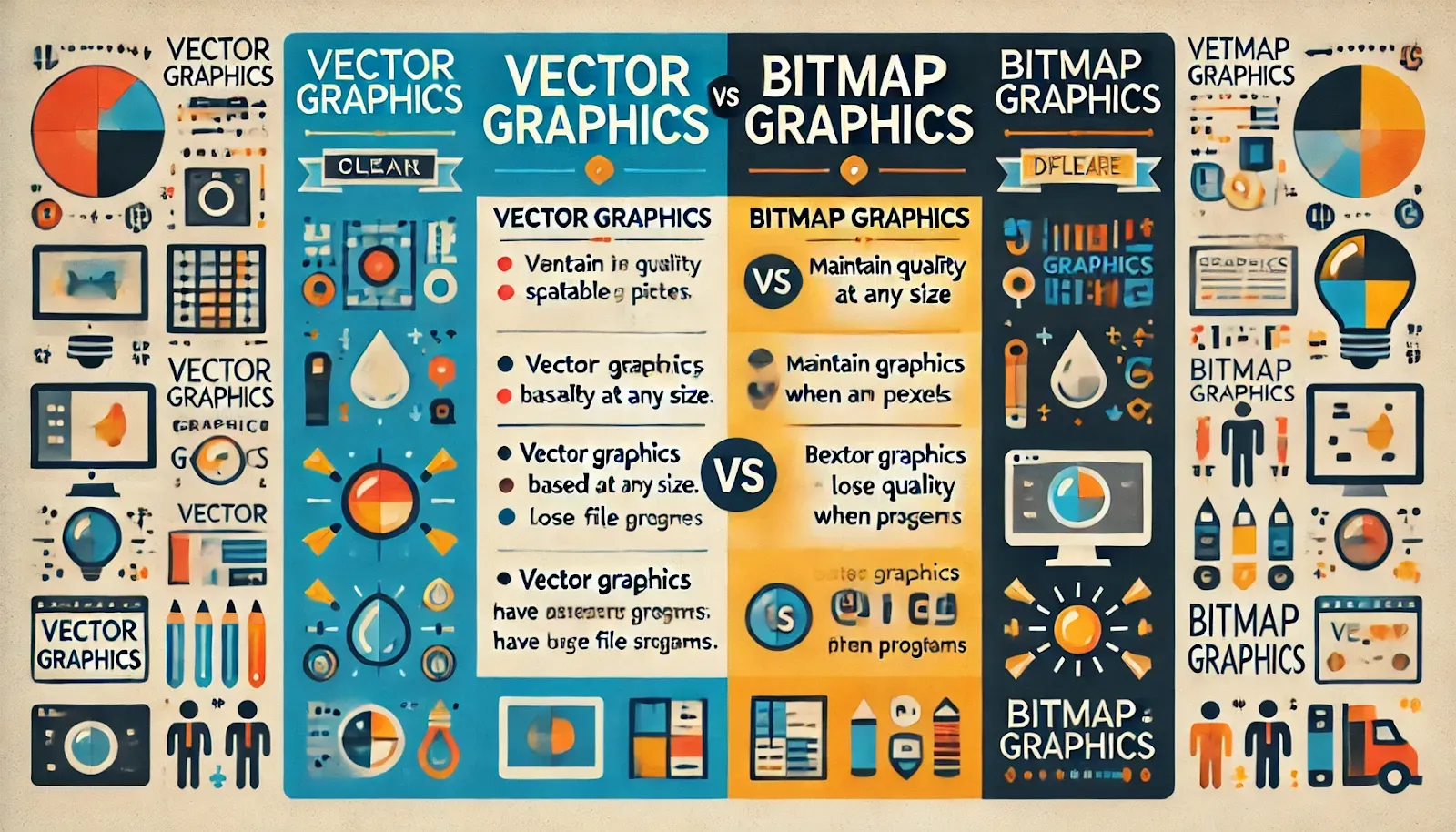In the digital world, understanding the basics of images is essential for web design, print, and multimedia. This article covers everything from image resolution, pixels, and types of images to image compression and popular image file formats.
What is an Image?
An image is a 2-D signal processed by the human visual system. In digital form, images are made up of small units called pixels, which together create a complete picture.
What Does Image Resolution Mean?
Image resolution describes the clarity of an image and is typically measured in PPI (pixels per inch). Resolution can also be identified by the width and height of an image in pixels. For example, an image that is 2048 pixels wide and 1536 pixels high contains 3,145,728 pixels, or 3.1 Megapixels.
What is a Pixel?
The term pixel means “picture element.” Every digital image is made up of pixels, which are the smallest units of information in an image. Pixels are usually square or round and arranged in a 2-dimensional grid.
What are PPI & DPI?
- PPI (Pixels Per Inch): This refers to the display resolution, indicating the number of individual pixels displayed in one inch of a digital image.
- DPI (Dots Per Inch): This refers to printer resolution, representing the number of dots of ink on a printed image.
Vector and Raster Graphics / Images
Images are classified as either raster or vector:
- Raster Images: Made up of pixels, raster images like JPEG, GIF, and PNG are commonly found online and in print. They may lose quality when resized.
- Vector Images: Made using proportional formulas rather than pixels, vector images (EPS, AI, and PDF formats) can be resized without losing quality. Vectors are ideal for logos and branding graphics.
Difference Between Vector and Raster Graphics
The primary difference between raster and vector graphics is their structure:
- Raster Graphics: Composed of pixels, creating a grid of colors that form the image. They become blurry or “blocky” when resized.
- Vector Graphics: Made up of paths defined by mathematical formulas, allowing them to scale without losing quality.
Image Compression Techniques:
What is Image Compression?
Image compression is a technique that reduces the file size of an image. Compression is essential for saving storage space and speeding up web loading times. There are two main types of compression: lossy and lossless.
Why Do We Need Compression?
- Storage Space: Compressed images save valuable storage space.
- Faster Transmission: Smaller file sizes mean faster upload and download times on the internet.
- Applications: Useful for multimedia editing, satellite data, and web image transmission.
Types of Compression
There are two primary types of image compression:
- Lossy Compression: Removes non-essential data, resulting in a smaller file size but lower quality. Used for images, audio, and video.
- Lossless Compression: Compresses the file without losing data or quality. Commonly used for text, images, and sound where quality retention is necessary.
| S.No | Lossy Compression | Lossless Compression |
|---|---|---|
| 1 | Removes non-noticeable data. | Does not remove data. |
| 2 | Cannot restore original quality. | Original quality can be restored. |
| 3 | Quality is compromised. | No compromise in quality. |
| 4 | Reduces data size. | Does not reduce data size significantly. |
| 5 | Used in images, audio, video. | Used in text, images, sound. |
Popular Image Formats
There are numerous image formats, each suitable for specific purposes:
- JPEG (Joint Photographic Experts Group): JPEG is the most common file type you run across on the web, and more than likely the kind of image that is in your company's MS Word version of its letterhead. JPEGs are known for their "lossy" compression, meaning that the quality of the image decreases as the file size decreases. You can use JPEGs for projects on the web, in Microsoft Office documents, or for projects that require printing at a high resolution. Paying attention to the resolution and file size with JPEGs is essential in order to produce a nice looking project.
- PNG (Portable Network Graphics): Lossless format, supports transparency, ideal for web images.
- GIF (Graphics Interchange Format): Supports 256 colors and transparency; can be animated. Commonly used for web graphics.
- TIFF (Tagged Image File Format): High-quality raster format with lossless compression; suitable for print.
- PSD (Photoshop Document): Adobe Photoshop's proprietary format, supports layers for editing.
- PDF (Portable Document Format): PDFs were invented by Adobe with the goal of capturing and reviewing rich information from any application, on any computer, with anyone, anywhere. I'd say they've been pretty successful so far. If a designer saves your vector logo in PDF format, you can view it without any design editing software, and they have the ability to use this file to make further manipulations.
- EPS (Encapsulated Postscript): Vector format used for high-resolution graphics in print. The EPS extension is more of a universal file type (much like the PDF) that can be used to open vector-based artwork in any design editor.
- BMP (Bitmap Image File): Uncompressed format with high quality but large file sizes.
Conclusion
Understanding image types, resolution, and compression techniques is vital for optimizing image quality and performance. Whether you’re working with vector or raster graphics, choosing the right format and compression method can significantly impact storage, speed, and image clarity in web and print applications.









![2023-2024 Iti Workshop calculation and science MCQ [Latest]](https://blogger.googleusercontent.com/img/b/R29vZ2xl/AVvXsEhGgp3rh9IMpumLZ4PkKjs8U74o_epkhHEcrazTJr6B06xyg56c8J1-qfXlIQhA2Ny2qxgYYtXU67ri4s_t2BmryCcsLUFoECe0Ns6GsqMVS-J6F5OJnw-DV9WZbT2NFKhBy4yBZqOrrkBsGXD0e_1_A0-gXqx1dDK138W5f8HBqEle1kXTBkLMx3N7-w/w72-h72-p-k-no-nu/new.png)

.jpg)

0 Comments
Thanks for visiting! We'd love to hear your thoughts – feel free to comment below.